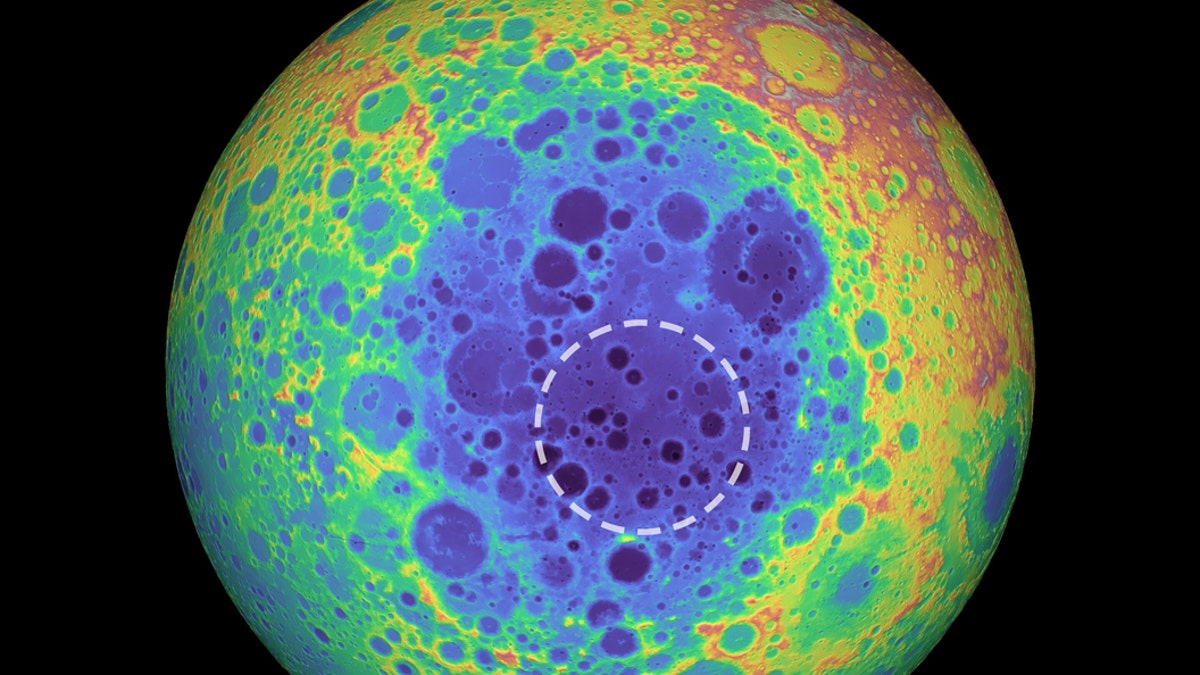A new study suggests that a ‘large body’ crashed into the Moon and gave it its distinctive features
A new study suggests that a ‘large body,’ perhaps an ancient planet or asteroid, crashed into the Moon and gave it its distinctive features.
A large mass of unknown material has been discovered on the largest crater on the Moon and scientists aren't sure what it is.
According to an April 2019 study published in the journal Geophysical Research Letters, the researchers believe the mass could contain metal from an asteroid that crashed into the celestial satellite, which resulted in the aforementioned crater, known as the Lunar South Pole-Aitken basin.
"Imagine taking a pile of metal five times larger than the Big Island of Hawaii and burying it underground. That's roughly how much unexpected mass we detected," lead author Dr. Peter James, assistant professor of planetary geophysics at Baylor University, said in a statement.
MYSTERIOUS LIGHT FLASHES ON THE MOON HAVE BEEN BAFFLING RESEARCHERS FOR DECADES
At roughly 1,550 miles in diameter, the Lunar South Pole-Aitken basin stretches across approximately one-fourth of the Moon, according to NASA. The Moon's circumference is roughly 11,000 kilometers.

This false-color graphic shows the topography of the far side of the Moon. The warmer colors indicate high topography and the bluer colors indicate low topography. The South Pole-Aitken (SPA) basin is shown by the shades of blue. The dashed circle shows the location of the mass anomaly under the basin. (Credit: NASA/Goddard Space Flight Center/University of Arizona)
In addition to being the largest crater on the Moon, the Pole-Aitken basin is also one of the largest known impact craters in the solar system and is thought to be approximately 4 billion years old.
James and his team looked at data from NASA's Gravity Recovery and Interior Laboratory (GRAIL) mission and the changes in gravity they discovered surprised them.
"When we combined that with lunar topography data from the Lunar Reconnaissance Orbiter, we discovered the unexpectedly large amount of mass hundreds of miles underneath the South Pole-Aitken basin," James said. "One of the explanations of this extra mass is that the metal from the asteroid that formed this crater is still embedded in the Moon's mantle."
The anomaly – "whatever it is, wherever it came from," James added – is weighing down the basin floor by more than half a mile. The team of researchers ran computer simulations that show the iron-nickel core of an asteroid could have been placed into the upper mantle of the Moon following impact.
EXOMOONS COULD BE HOME TO EXTRATERRESTRIAL LIFE, RESEARCHER SAYS
"We did the math and showed that a sufficiently dispersed core of the asteroid that made the impact could remain suspended in the Moon's mantle until the present day, rather than sinking to the Moon's core," James noted.
One other possibility for the unexplained mass is that it could be an area where dense oxides compiled following the last stage of lunar magma ocean solidification.
Whatever it is, James said the basin is "one of the best natural laboratories for studying catastrophic impact events, an ancient process that shaped all of the rocky planets and moons we see today."





















